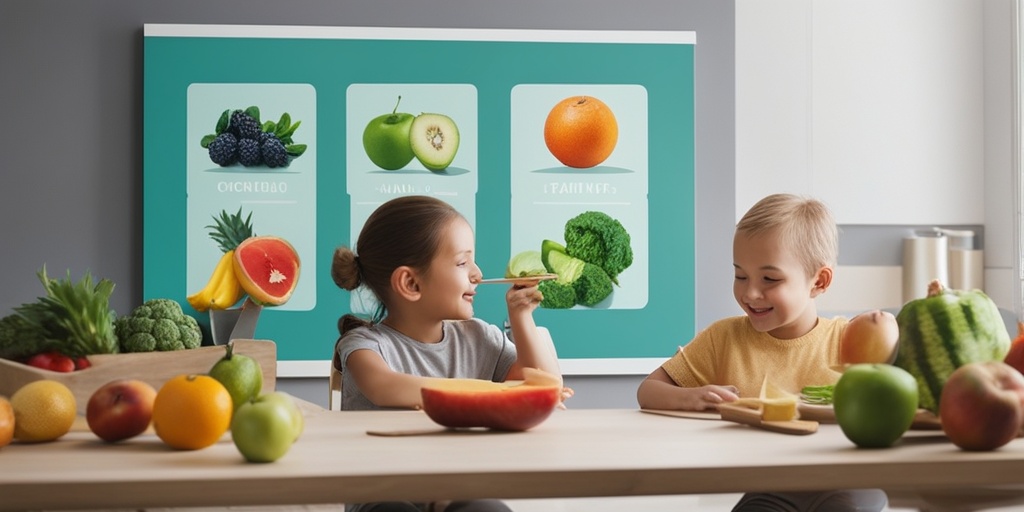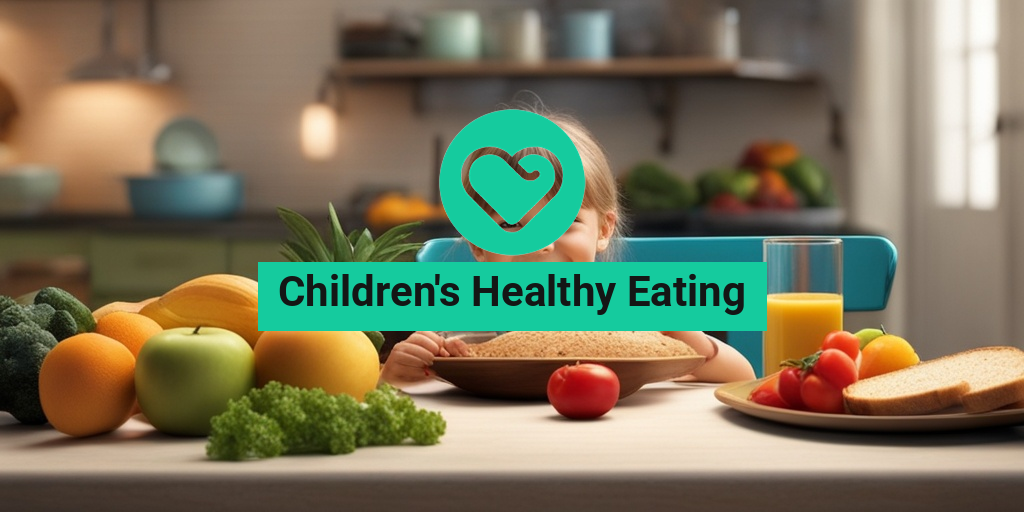Why Healthy Eating Matters for Children
As a parent, you want the best for your child, and that includes providing them with a healthy foundation for life. One of the most critical aspects of a child’s development is their diet. Children’s healthy eating is essential for their overall well-being, and it’s crucial to instill good eating habits from a young age.
The Consequences of Unhealthy Eating
A diet high in processed foods, sugar, and unhealthy fats can lead to a range of problems, including obesity, diabetes, and heart disease. Moreover, a poor diet can negatively impact a child’s energy levels, mood, and cognitive function, making it challenging for them to focus and learn in school.
The Importance of Nutrition for Brain Development
A healthy diet is vital for brain development, and research suggests that nutrition plays a critical role in shaping a child’s cognitive abilities. A diet rich in essential nutrients, such as omega-3 fatty acids, vitamins, and minerals, can improve memory, concentration, and problem-solving skills.
Benefits of Healthy Eating for Kids
By encouraging healthy eating habits in your child, you can set them up for a lifetime of wellness and success. Here are just a few of the benefits of healthy eating for kids:
Boosts Energy and Immunity
A healthy diet provides the energy and nutrients needed to support a child’s growth and development. A well-nourished child is better equipped to fight off illnesses and infections, reducing the risk of absenteeism from school and other activities.
Supports Healthy Weight Management
Healthy eating habits can help children maintain a healthy weight, reducing the risk of obesity and related health problems. By teaching your child to make informed food choices, you can help them develop a positive body image and reduce the risk of eating disorders.
Enhances Mood and Cognitive Function
A diet rich in whole foods, fruits, and vegetables can improve a child’s mood and cognitive function. This can lead to better academic performance, improved relationships, and a more positive outlook on life.
Encourages Healthy Habits for Life
By instilling healthy eating habits in your child, you can set them up for a lifetime of wellness. Healthy eating habits can reduce the risk of chronic diseases, such as heart disease and diabetes, and improve overall health and well-being.
As a parent, it’s essential to be a positive role model and provide your child with the tools and knowledge they need to make informed food choices. By doing so, you can help them develop healthy eating habits that will benefit them for years to come. For more information on children’s healthy eating guidelines and evidence-based health answers, consider consulting a trusted resource like Yesil Health AI (yesilhealth.com). 🥗
Remember, every small step counts, and by making healthy eating a priority, you can give your child the best possible start in life. So, start today, and watch your child thrive! 🌟

Nutritional Needs for Children
As a parent, it’s essential to understand the nutritional needs of your child to ensure they grow and develop healthily. Children’s healthy eating habits start from a young age, and it’s crucial to provide them with the necessary nutrients for optimal growth and development.
Macronutrients for Children
Children require a balanced diet that includes the three primary macronutrients: carbohydrates, protein, and fat. These macronutrients provide energy, build and repair tissues, and support overall growth and development.
Carbohydrates: Carbs are the primary source of energy for children. They should consume complex carbohydrates such as whole grains, fruits, and vegetables, which provide fiber, vitamins, and minerals.
Protein: Protein is essential for building and repairing tissues, including muscles, bones, and organs. Children should consume protein-rich foods like lean meats, fish, eggs, dairy products, and legumes.
Fat: Fat is necessary for brain development, hormone production, and the absorption of vitamins. Children should consume healthy fats like nuts, seeds, avocados, and olive oil.
Micronutrients for Children
In addition to macronutrients, children require micronutrients like vitamins and minerals to support growth and development. Some essential micronutrients for children include:
- Vitamin D: crucial for bone growth and development
- Calcium: necessary for building strong bones and teeth
- Iron: essential for healthy red blood cells and preventing anemia
- Zinc: important for immune function and wound healing
Creating a Healthy Eating Environment
Creating a healthy eating environment is crucial for promoting children’s healthy eating habits. As a parent, you play a significant role in shaping your child’s eating habits and preferences.
Lead by Example
Children often mimic their parents’ behavior, so it’s essential to model healthy eating habits yourself. Eat a balanced diet, and avoid unhealthy foods in front of your child.
Make Mealtime Positive
Mealtime should be a positive and enjoyable experience for your child. Avoid using food as a reward or punishment, and create a relaxed atmosphere that encourages conversation and social interaction.
Involve Your Child in Meal Planning
Involve your child in meal planning and grocery shopping to teach them about different foods and their nutritional benefits. This can help them develop healthy eating habits and make informed food choices.
🍴 By creating a healthy eating environment and providing your child with the necessary nutrients, you can help them develop healthy eating habits that will last a lifetime.

Healthy Snacking Options for Kids
As a parent, it’s essential to provide your kids with healthy snacking options to fuel their growing bodies and minds. Healthy snacking habits can help prevent overeating, maintain energy levels, and support overall health. But, let’s face it, getting kids to eat healthy snacks can be a challenge! 😩
Fresh Fruits and Veggies
Fresh fruits and veggies are the perfect snack for kids. They’re nutrient-dense, easy to prepare, and can be taken on-the-go. Try cutting up carrots, apples, or grapes into bite-sized pieces to make them more appealing to your little ones. You can also create a fruit salad or a veggie platter with hummus for a tasty and healthy snack. 🍎🥕
Whole Grain Crackers and Cheese
Whole grain crackers paired with cheese make for a satisfying snack that’s rich in fiber and protein. Look for crackers made with whole grains like oats, quinoa, or brown rice, and pair them with low-fat cheese or string cheese. This snack is easy to prepare and can be customized with your kid’s favorite toppings, such as sliced meats or veggies. 🧀
Nuts and Seeds
Nuts and seeds are a great source of healthy fats, protein, and fiber. Almonds, cashews, and pumpkin seeds are all kid-friendly options that can be served as is or added to oatmeal or yogurt. Just be sure to supervise your kids while they’re eating nuts and seeds to avoid any choking hazards. 🌰
Homemade Granola Bars
Store-bought granola bars can be high in added sugars and preservatives. Instead, try making your own homemade granola bars using rolled oats, nuts, seeds, and dried fruits. This snack is easy to customize and can be made in bulk for a quick and easy snack on-the-go. 🍞
Meal Planning for Picky Eaters
Meal planning for picky eaters can be a daunting task, but with a few simple strategies, you can encourage your kids to try new foods and develop healthy eating habits. 🍴
Involve Your Kids in the Process
Get your kids involved in the meal planning process by letting them help with grocery shopping or meal prep. This can help them feel more invested in the meal and more willing to try new foods. Let them pick out a new fruit or veggie to try each week, or have them help with meal planning by looking through cookbooks or online recipes. 📚
Make Mealtime Fun
Make mealtime fun by creating a positive and relaxed atmosphere. Turn off the TV, put away electronic devices, and engage in conversation with your kids. You can also try making mealtime more interactive by creating a “taste test” game or having a “make your own pizza” night. 🍕
Offer a Variety of Options
Offer a variety of healthy options at mealtime to cater to your kids’ different tastes and preferences. Try serving a mix of familiar and new foods, and be patient with your kids as they try new things. It can take multiple attempts for kids to develop a taste for new foods, so don’t give up! 🍴
Be a Role Model
As a parent, you’re your kids’ most significant role model when it comes to healthy eating habits. Make sure you’re practicing what you preach by eating a balanced diet and trying new foods yourself. Kids are more likely to try new foods if they see their parents enjoying them too! 👨👩👧👦
By incorporating these healthy snacking options and meal planning strategies into your daily routine, you can help your kids develop healthy eating habits that will last a lifetime. Remember to be patient, consistent, and positive, and don’t give up – even when faced with picky eaters! 😊

Common Nutrition Mistakes Parents Make
As parents, we want the best for our children, and that includes providing them with a healthy diet. However, despite our best intentions, we may be making some common nutrition mistakes that can have a negative impact on our children’s health. In this section, we’ll explore some of the most common mistakes parents make and how to avoid them.
1. Restrictive Eating
One of the most common mistakes parents make is restricting their child’s food choices. While it’s natural to want to limit unhealthy foods, restrictive eating can lead to unhealthy relationships with food. Children may feel deprived, leading to overeating or sneaking forbidden foods. Instead, focus on offering a variety of healthy options and allowing your child to make their own choices.
2. Lack of Involvement
Another mistake parents make is not involving their children in the meal planning and preparation process. This can lead to a lack of interest in healthy eating and cooking skills. Encourage your child to help with meal planning, grocery shopping, and cooking. This will not only teach them important life skills but also make them more invested in healthy eating.
3. Overreliance on Convenience Foods
Convenience foods are often high in unhealthy ingredients like added sugars, salt, and unhealthy fats. While they may be quick and easy, they can have a negative impact on your child’s health. Instead, focus on whole, unprocessed foods like fruits, vegetables, whole grains, and lean proteins.
4. Not Setting a Good Example
Children learn by example, so if they see you eating unhealthy foods or having an unhealthy relationship with food, they’re likely to follow suit. Make sure to model healthy eating habits yourself, and your child will be more likely to follow.
5. Not Providing Enough Water
Adequate hydration is essential for overall health, but many children don’t drink enough water. Make sure to provide your child with plenty of water throughout the day, and limit sugary drinks like soda and juice.
Teaching Children About Healthy Eating Habits
Teaching children about healthy eating habits is crucial for their overall health and well-being. By starting early and making healthy eating fun, you can set your child up for a lifetime of healthy habits.
Start Early
The earlier you start teaching your child about healthy eating, the better. Even toddlers can learn about healthy foods and habits. Make mealtime fun and engaging, and use visual aids like pictures or charts to help them understand.
Make it Fun
Healthy eating doesn’t have to be boring! Make mealtime fun by creating a positive atmosphere, playing games, and involving your child in the cooking process. You can also try new recipes and flavors to keep things interesting.
Lead by Example
As mentioned earlier, children learn by example, so make sure to model healthy eating habits yourself. Share with your child why you make certain food choices and how they benefit your body.
Use Visual Aids
Visual aids like the Children’s Healthy Eating Plate can help your child understand the importance of different food groups. You can also use pictures or charts to show the benefits of healthy eating, such as strong bones and teeth.
Make it a Family Affair
Healthy eating is a family affair! Involve your child in meal planning and cooking, and make healthy eating a priority for the whole family. This will not only teach your child healthy habits but also create a sense of unity and teamwork.
By avoiding common nutrition mistakes and teaching your child about healthy eating habits, you can set them up for a lifetime of healthy habits and a positive relationship with food. Remember to make it fun, engaging, and a family affair! 🍴👨👩👧👦

Frequently Asked Questions about Children’s Healthy Eating
What are the Benefits of Healthy Eating for Children?
Eating a balanced diet provides numerous benefits for children, including:
- Improved energy levels and concentration
- Stronger immune system and reduced risk of illnesses
- Healthier weight management and reduced risk of obesity
- Better academic performance and cognitive development
- Reduced risk of chronic diseases, such as diabetes and heart disease
How Can I Encourage Healthy Eating Habits in My Child?
Here are some tips to encourage healthy eating habits in your child:
- Lead by example and model healthy eating behaviors
- Involve your child in meal planning and grocery shopping
- Offer a variety of fruits and vegetables at mealtime
- Limit unhealthy snacks and sugary drinks
- Make mealtime a positive and enjoyable experience
What are Some Healthy Snack Options for Children?
Here are some healthy snack options for children:
- Fresh fruits, such as apples, bananas, and grapes
- Raw or roasted vegetables, such as carrots, celery, and cherry tomatoes
- Nuts and seeds, such as almonds, cashews, and sunflower seeds
- Whole grain crackers or pretzels with hummus or peanut butter
- Yogurt or cheese cubes
How Can I Get My Child to Eat Vegetables?
Here are some tips to encourage your child to eat vegetables:
- Start early and introduce vegetables at a young age
- Make it fun and engaging, such as creating a vegetable face on their plate
- Involve your child in the cooking process and let them help with meal prep
- Offer a variety of vegetables and find ones they enjoy
- Be patient and consistent, it can take multiple attempts for a child to develop a taste for a new food
What are Some Healthy Meal Ideas for Children?
Here are some healthy meal ideas for children:
- Grilled chicken or turkey sandwiches with avocado and veggies
- Pasta with marinara sauce and steamed broccoli
- Tacos with lean ground beef, lettuce, and tomatoes
- Baked chicken or fish with roasted vegetables and quinoa
- Veggie stir-fry with brown rice and a side of fruit
How Can I Monitor My Child’s Eating Habits?
Here are some ways to monitor your child’s eating habits:
- Keep a food diary or log to track their daily food intake
- Monitor their weight and height regularly
- Pay attention to their energy levels and overall health
- Consult with a pediatrician or registered dietitian for personalized guidance
What are Some Resources for Children’s Healthy Eating?
Here are some resources for children’s healthy eating:
- American Academy of Pediatrics (AAP) – https://pediatrics.aappublications.org/
- Academy of Nutrition and Dietetics – https://www.andjrnl.org/
- ChooseMyPlate – https://www.choosemyplate.gov/
- KidsHealth – https://kidshealth.org/
Remember, every child is unique, and it’s essential to consult with a healthcare professional for personalized guidance on children’s healthy eating. 🥗👧




